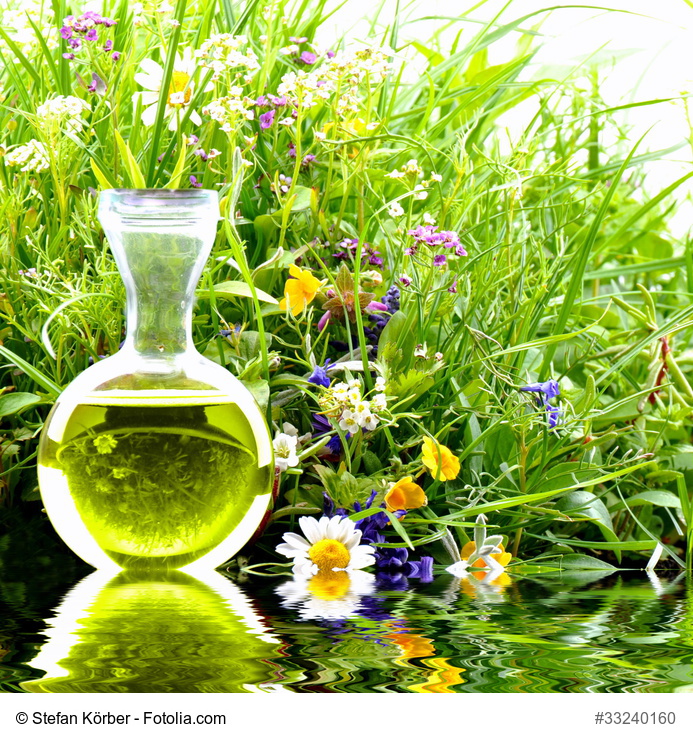Whilst tea-, honey and food supplement producers already knew about, it was unfamiliar known by spice producers. According to the statement of Germany’s Bundesinstitut für Riskobewertung (BfR= Federal Institute for Risk Assessment) of 28th September 2016, Pyrrolizidinalkaloide (PA) are now closer at spice producers, because they may be contained in spices. Up to now data are missing to give a reasonable statement. This is why Spice Associations are now asking to furnish data on Pyrrolizidinalkaloide. Bring to knowledge why it may be of value to keep a clear head…..
Nature is a great system – it can help itself
PAs (Pyrrolizidinalkaloide) are secondary plant substances, which can occur in more than 6.000 different plants, mostly weeds. They are forming these substances to protect against diseases, herbivores, UV-light or strong light. Or simply to attract pollinators.
PAs have a toxic effect on the animal metabolism. European weeds as forget-me-not, borage, viper’s bugloss or ragwort, growing mainly on fallow land or on the roadside, had built up such a mechanism. Wild animals are the first, who are affected, but also horses or dogs.
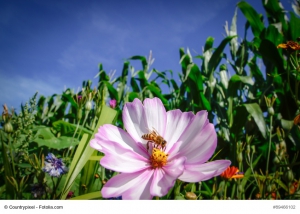
Flying seed can spread the weed from surrounding fields. It is hard to remove them in the growing areas. And if they are grown in the field, it is most likely that the weeds will be harvested – together with the normal crop – and contaminates it.
Therefore it is not surprising, that PAs are explored in teas, especially in herbal teas and black teas, or in leafy vegetables. PAs are also found in honey because bees transport them from the field to the beehive. BfR believes that presently there is no acute danger for consumers because quantities – doses – are too low causing an acute effect.
What are the risk of human consumption?
There have been findings on the toxic effect of PAs for more than thirty years. Already in 1988 WHO stated that the toxic effects on PAs may cumulate.
PAs are absorbed in the human body via oral intake and are metabolized there. The liver is the basic target organ: i.e. liver degeneration within horses, liver cirrhosis within slaughter cattle, which ate grass and hay with weed. Long-term tests also showed development of tumors. But there is still a lack of reliable data material. Only in two cases, where children were involved, toxic and dosage could be related because of the known tea-consumption of a six years old girl and two months old boy, who died after six days.
Animal experiences sowed cancerous impacts of certain unsaturated PA and a certain risk has to be taken into consideration. Some PA (i.e. Monocrotalin) can negatively affect our lungs.
Why PAs are an issue now
Since July 2013 plant substances as PAs had been the subject of criticism. At that time a research project on new analytical methods found out of how to detect PAs more precisely. This procedure was able to detect precisely five PA forming weed-plants in one hectare of more than 50.000 crop plants.[1] The German Federal Institute for Risk Assessment now gave alarm because of the detected values in teas.
It isn’t long before the honey producers were focused, because bees distributed PAs on the entire fields. Thus secondary plant substances were found in honey.
In 2014, Codex Alimentarius developed a code of practice to avoid and to reduce contamination by weed controls, translated in 2016 by the BLL (The German legal committee on food law and food information). This created great response.
September 2016: Germany’s Federal Institute for Risk Assessement took positions and claimed to reduce PAs in food as much as possible. At that time BfR had summarized the results of three studies from EFSA (European Food Safety Authority), BVL (Federal Office of Consumer Protection and Food Safety).
This was the first time, comprehensive data materials for tea, honey and food supplements were available. Some PAs had been detected in spices, too, but sample size of 40 had been too low to achieve a valid result. Therefore BfR concludes that it possible that spices and herbs are an additional source of exposure of PAs. However it was not possible to provide a conclusive assessment because of missing information about differentiated products. BfR concluded that the data bases for spices needs to be improved. In consequence, the Spice Associations now asks their members provide datas on PAs.
What we know already
PAs – an inescapable consequence of Pesticide Regulations?
After all, that is what we wanted, because we did not like pesticides. After analytics is able to detect more than 650 different pesticides at µg level or even sup µg level, European legislation has become stricter. In consequence many farmers in the origin have learned. Slowly pesticide discussions are starting to settle: only some origins, only some products and the area of organic products – where regulations are even stricter – pesticides are in discussion. Meanwhile more notifications on allergens are reported in the European Rapid Alert System on Food and Feed (RASFF), than on pesticides.
Surely a positive development: but there is another side of the coin. Herbicides pertain to pesticides. And herbicides prevent for weeds. Since farmers do use less pesticide, herbicides can multiply again.
It is in the nature of things: not all of our spices are affected by PAs. Only those who grow near the ground in the fields: means herbs or seeds for example. Spices growing on trees or as panicles, as roots or as barks are not involved according to today’s knowledge.
Vulnerability to contamination is – as far as our experience goes – different and depended on whether planted in big fields or small plots. Contaminations with PAs are most common, where plots are small. There is mostly less space for paths to do the weeding. Furthermore there is less distance to the neighboring plots and their weeds. Of course wild growing herbs could be contaminated, too. Sometimes it is even a question of origin: up to now there are no PAs found in products out of Ukraine, where fields are large.
Already in 2014, CODEX Alimentarius developed a Code of Practice for Weed Control to Prevent and Reduce Pyrrolizidinalkaloide Alkaloid Contamination in Food and Feed. Therein it is recommended to implement a weed management on farm level as a combination of non-chemical and chemical processes, to achieve the maximum impact.
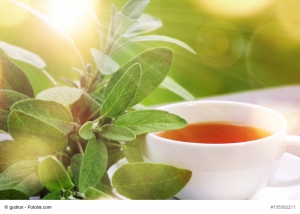
PAs – and health based guidance value
Different institutions, as WHO for example, had created a risk-evaluation model, which enables us to assess the risk of PAs in different products. The Health Based guidance value (HBGV) is a health related benchmark, based on a maximum daily exposure of 0, 1 µg /kg for a person weighing 60 kg.
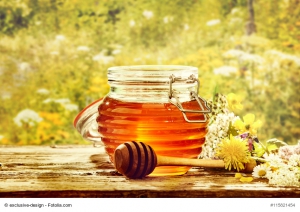
In concrete terms that means that if PAs are found, the risk has to be assessed using a toxicological calculation.
Example calculation:
Content of PA in a spice 764 µg/kg
Taking into consideration an adult, (of 60 kg weight) will have an intake of 5 g of this product, would result in 3,82 µg Pyrrolizidinalkaloiden intake per day.
The result is below the recommended intake of 6µg related to a 60 kg weighing person.
Don’t become confused
Currently there is no legislation and there are no limiting values on PAs, neither in teas, nor in honey nor in spices. According to the new National Consumption Study 2, conducted by Max Rubner Institutes, we know than men are consuming 33 g and women 24 g/day on spices and sauces. Taking into consideration that warm and cold sauce, fruit sauces, ketchup, vinegar, mustard and spices are contained in this group, obviously only a small part of this are spices.
A Norwegian study of 2007 gave first indications on frequencies and quantities of monthly intake of different spices. Essentially it was about comparison of two statistical methods (FFQ and HSR). The result showed that the human intake of spices is very small.[3]
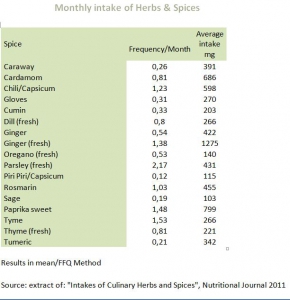
Results of further studies – i.e. results of a large-scaled Chinese Study carried out between 2008 and 2012 with half a million participants, states that the regular intake of spices may lead to extended life expectancy. The study showed that the regular consumption of Chili leads to decreased mortality of 14 % [2].
Even today, spices as Turmeric are known as positive for health. It has already been part of traditional Chinese medicine and Chinese dietetics for thousands of years. Since many years, spices and herbs apply to homeopathy and ayuveda, as well.
In the light of new scientific evidences and better analytical methods, more and more horrific news arise. But we should not panic. After all the knowledge of PA in spices is actually based only on 40 samples. It is hard to assess and rate the risk of PAs from spices. According to first insights there are some seeds and herbs from some countries involved. To be sure of that, it is now of importance to gather as much analyzed datas as possible
[1] Birgit Will, Schädlicher Wildwuchs, LZ 41, 14. Oktober 2016, S. 34 ff.
[2] http://www.bmj.com/content/351/bmj.h3942″
[3] M.H. Carlsen, R.Blomoff and L. F. Andersen, Intakes of culinary herbs and spices from a food frequency questionnaire
All data given are according to our todays knowledge or opinion. They are without obligation.

